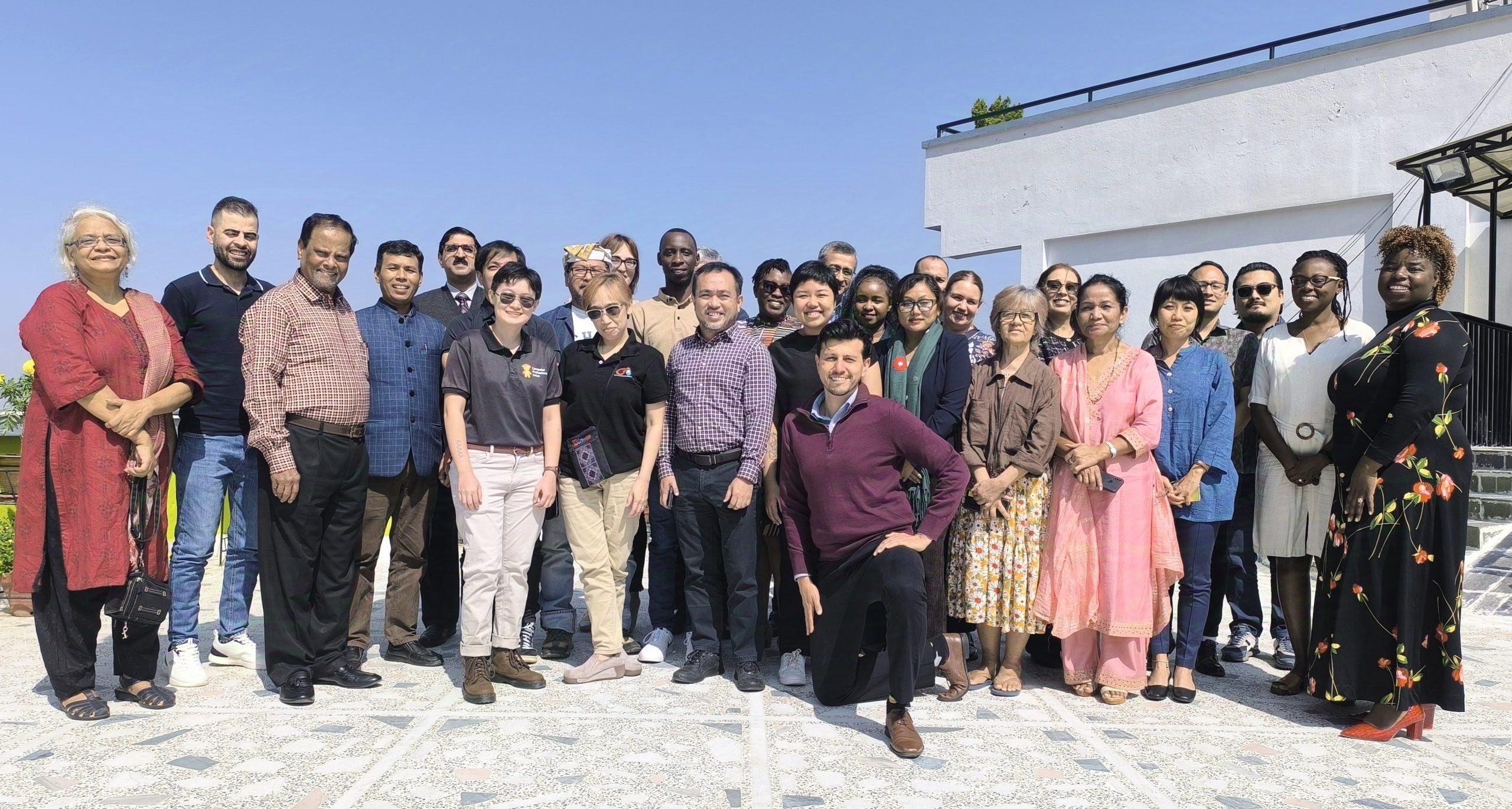The words echoed through the room at the recent World Association for Christian Communication (WACC) Forum, and they continue to resonate globally: “Nothing about us without us.” These were the words of Lorenzo Vargas, Program Manager for Communication for Social Change at WACC and one of the esteemed speakers, who presented an outline of the Forum’s agenda, objectives, and context (including the World Summit on the Information Society (WSIS+20) and the Global Digital Compact).
His message captured a core belief that resonates with marginalized communities worldwide. This phrase, laden with a call for inclusivity, speaks to the challenges faced in societies with diverse cultural backgrounds, ethnic groups, and indigenous populations
As the forum opened its doors to global voices from October 22–25, 2024, WACC, in collaboration with AMARC Asia-Pacific, hosted partners from around the world, in Nepal, to tackle an urgent issue of our time: “communication rights“. Together, we looked into the connections between these rights and social justice in today’s digital world, addressing a crucial question—how can we guarantee communication rights within an increasingly unequal digital landscape?
The Digital Divide: A Barrier to Equity and Opportunity
At its core, the digital divide represents inequality in access to digital resources. In Kenya, for instance, only some have access to smartphones, computers, or the internet, creating disparities in digital literacy. While Kenya stands tall as East Africa’s digital and economic hub, rural areas still lag. 70.7% of Kenyans reside in rural areas, where internet access is scarce, and online services remain out of reach.
This gap disproportionately affects women. Statistics show that Kenyan women are 50% less likely to use the internet for economic and political empowerment than men. Cultural biases and systemic barriers limit women’s engagement in the digital sphere, creating a cycle of exclusion that curbs their voice and representation online. From online harassment to restricted job opportunities, women face numerous hurdles that men seldom encounter in the same environments.
Voices from the Global Forum: Stories of Resilience and Exclusion
From the Philippines to Bosnia, narratives from the forum highlighted the distinct experiences of women across regions. In the Philippines, while the gender gap has narrowed, digital growth comes with its own set of cultural implications. For example, many feel technology has eroded cultural values, with government regulations dictating what local news is permissible. Bosnia, too, struggles, with employment tied closely to government connections, stifling media independence and limiting opportunities for women.
This sense of exclusion isn’t limited to the workplace but extends into the online world, where many women journalists face harassment and threats. Social media, although a powerful tool for connection and self-expression, becomes a hostile space, pushing women away from visibility, safety, and justice. In Kenya, the prevalence of digital harassment and lack of accountability leaves women vulnerable, with little recourse.
Digital Disparities: Root Causes and Impact on Society
The digital divide’s evolution highlights not just access issues but the ability to effectively use technology. Rural-urban disparities are stark in Kenya, with rural communities—whether pastoralists or agriculturalists—struggling with minimal or no internet access. This limits their ability to utilize essential services like MPESA for financial transactions, online education, and healthcare. As these services become digitized, those without access are excluded, widening socioeconomic gaps.
Urban areas see faster broadband adoption and a higher rate of tech utilization, making it easier for urban residents to access services and opportunities denied to their rural counterparts. Additionally, gender disparities and cultural norms further restrict access to technology and exclude women from full participation in civic and economic life.
How Digital Inequalities Affect the Digital Sphere
In regions where digital literacy is low, marginalized communities, especially women, find their voices silenced. Job interviews or evaluations often place women in stereotyped “household” roles, reinforcing gender bias and limiting professional growth. For digital creators, a lack of regulation and guidance means that content can sometimes clash with cultural values, further complicating digital representation. In the Middle East, for instance, content creators are required to hold licenses for their work, a move intended to maintain standards but which raises questions about freedom of expression.
The Call to Action for Civil Society Organizations (CSOs)
Reflecting on the forum’s discussions, a metaphor shared by Suman Basnet (AMARC AP), captures the urgency of action: “The solution to stop a baby from crying is not to pull it away “. This plea underscores the need to address challenges, not by avoidance, but by engagement.
CSOs must champion policies and initiatives that bridge the digital divide and ensure inclusivity. This means prioritizing affordable internet access, promoting digital literacy in rural areas, and creating safe spaces for women and marginalized groups online. It also calls for policy reforms to protect women in the digital sphere, addressing issues like online harassment and exploitation.
Communication rights aren’t just abstract concepts—they’re essential pathways to inclusion, empowerment, and justice. Bridging the digital divide and fostering equal representation isn’t just an act of progress; it’s an act of compassion and commitment. The voices at the WACC Forum call upon us to recognize that real change requires the inclusion of those directly affected by these issues. Let us build a digital world where every voice, every story, and every individual is represented—because nothing about us should ever be decided without us.
![]()




